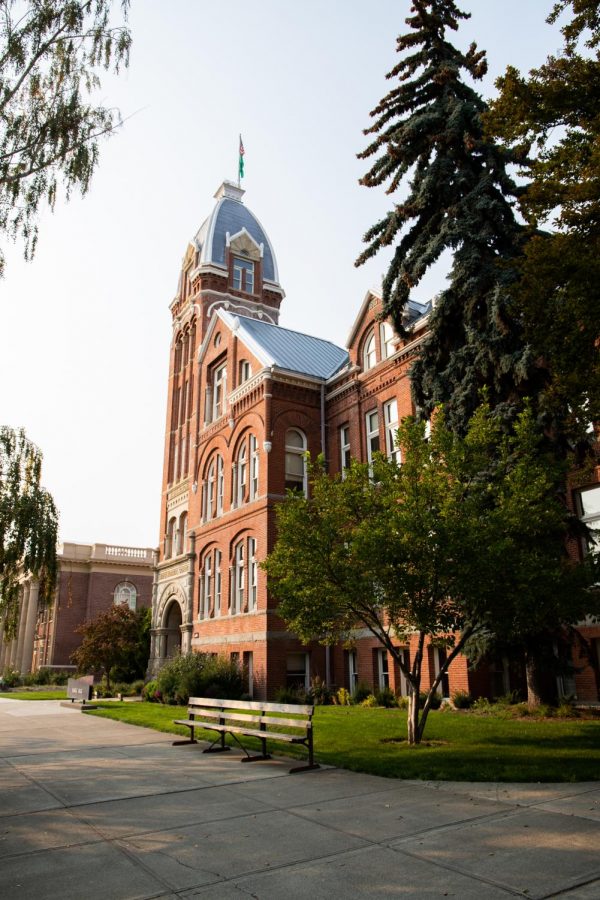Students, CWU to split $24 million in stimulus money
April 7, 2021
Students are set to receive $12 million of aid through the university as part of the third COVID-19 relief package that was passed last month.
The legislation, which is officially known as the American Rescue Plan Act, provides grant money to state and local governments, as well as public universities. CWU will receive $24 million total in grants through the bill, with half the money going towards students, while the other half will be used for other university costs.
Each of the two previous stimulus bills provided similar funding, and so far, CWU has distributed nearly $7.9 million to students.
Joel Klucking, the university’s chief financial officer, said during the first two rounds of aid there was an application process where students had to explain how they have been impacted. This process was overseen by the office of the dean of student success.
Klucking said as of now, he hasn’t heard anything to suggest the process would differ this time. He also said the new round of funding would likely start back up again during the spring quarter.
Students must request what expenses they wanted to be covered, such as rent or food. These requests are not guaranteed to be fulfilled, and during the winter students were capped at receiving $1,600.
After a student applies, it is then reviewed by the committee to determine whether the student should receive funding for their requests.
“So, if you say you’re just going to buy a new stereo with it, that’s not going to be very compelling,” Klucking said. “But if you need to make your rent payment, you’re going to have a more likely chance of being funded.”
There are few eligibility requirements for the money. DACA students and international students do not qualify for the funding, and the money is expected to be used for educational purposes by students who experienced pandemic-related hardships.
However, there is no verification process on how the money is spent after a student receives it.
“We have a couple of years to use the money, so we don’t have to do it all at once,” Klucking said. “We kind of feel that this is the last round, so the idea of giving some portion of it in the spring then sort of saving some portion of it for fall and winter kind of seems like an attractive option.”
8,134 students qualified for the first two rounds of payments. In the first round, 2,520 students received a total of $3,847,692. As of March 22, a total of $3,847,692 has been disbursed to 2,193 students in the second round of payments.
CWU will have until September 2023 to spend the $24 million.
The $12 million the university receives will go towards departments that have been impacted by fewer students being on campus. Klucking said in the current academic year, CWU has had $50 million in lost revenue.
“Most of that is through housing and dining and the bookstore, you know all of those things that if the students are not on campus, then they’re not really participating in those kinds of activities,” Klucking said.
Klucking said in a typical year, the university would have about $250 million in total revenue. However, the university has a revenue of about $200 million in the fiscal year 2020. CWU has also prepped for a decrease in funding from the state.
At the beginning of the pandemic, the governor’s office told all public universities in the state to prepare for a 15% permanent drop in funding. The university then took actions to prepare for this cut, which included furloughs last summer and staff layoffs.
“That’s been the big question, what is the state going to actually cut us?” Klucking said.
While CWU has prepared for the 15% cut, the state’s budget outlook has improved since last spring. Projections from the Washington Office of Financial Management last spring forecasted that the state would have a revenue deficit of $8.8 billion over the next three years.
Over the summer, the number was revised to $4.5 billion, and in the fall the projection showed a revenue shortfall of $3.3 billion. Current projections from the state show that there is a deficit of about $100 million.
Klucking said the current budget proposals from the State House of Representatives, the State Senate and the governor all have funding cuts that are less than the 15% which was originally expected.
“The economy has rebounded quite a bit more than they thought it would, and they got $4 billion in CAREs money from the government,” Klucking said.


